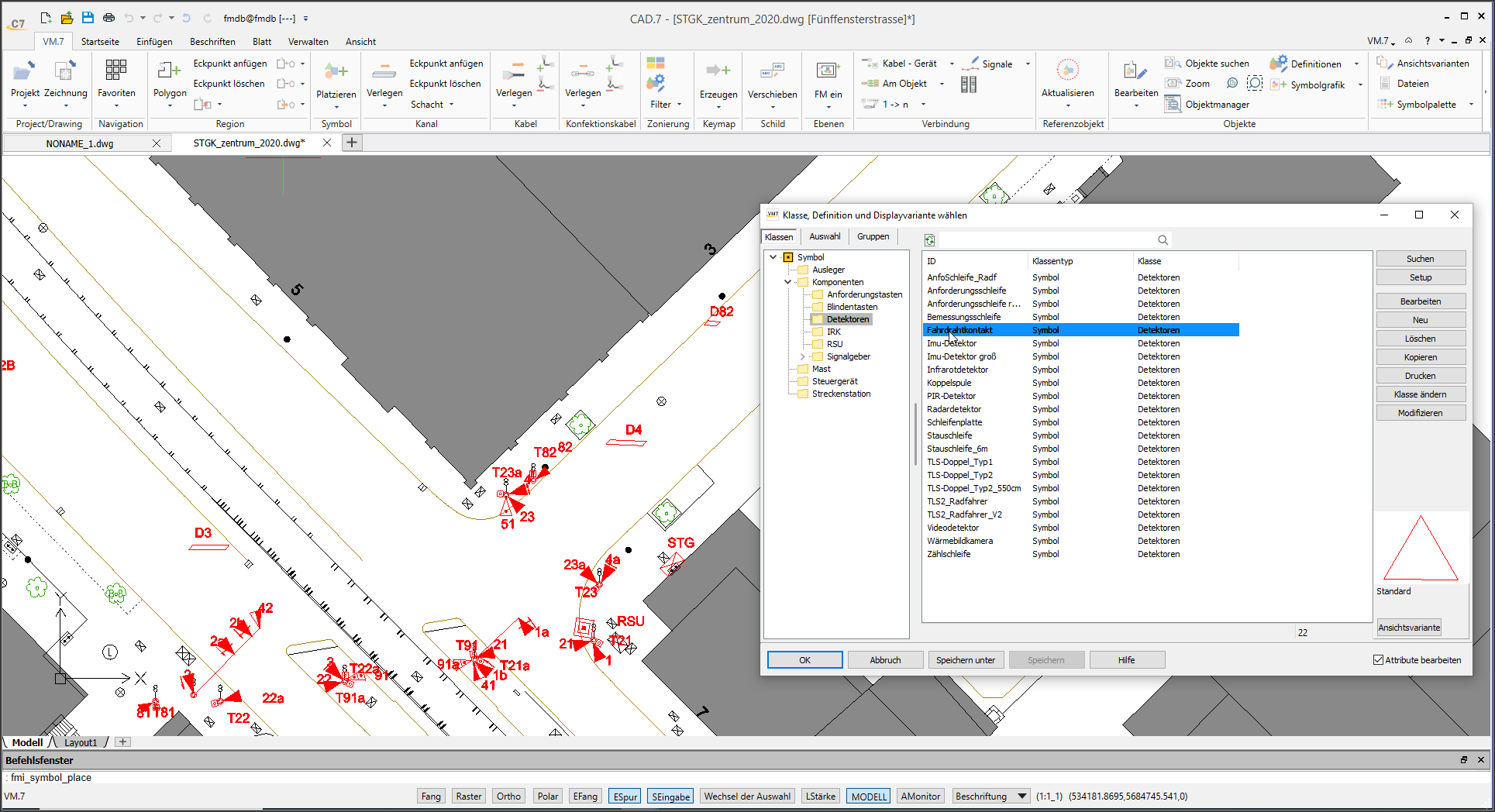VM.7 Interfaces
The value of VM.7 with all its modules is already compelling on its own. Data exchange with other systems further enhances its benefits.
VM.7 Interfaces
The value of VM.7 with all its modules is already compelling on its own. Data exchange with other systems further enhances its benefits.
SNMP Interface
A digital twin of a data center should not only be a static image but also capture the dynamics of data center operations. Therefore, effective data center management must integrate real-time data and be able to control other applications, such as access control systems. Our goal is to inform the user at the screen about the operating status of the data center at least as well as if they were on-site. In most cases, the overview is even better, as connections between different aspects become clearer, for example, through the analysis of time profiles of sensor values.
SNMP Interface
A digital twin of a data center should not only be a static image but also capture the dynamics of data center operations. Therefore, effective data center management must integrate real-time data and be able to control other applications, such as access control systems. Our goal is to inform the user at the screen about the operating status of the data center at least as well as if they were on-site. In most cases, the overview is even better, as connections between different aspects become clearer, for example, through the analysis of time profiles of sensor values.
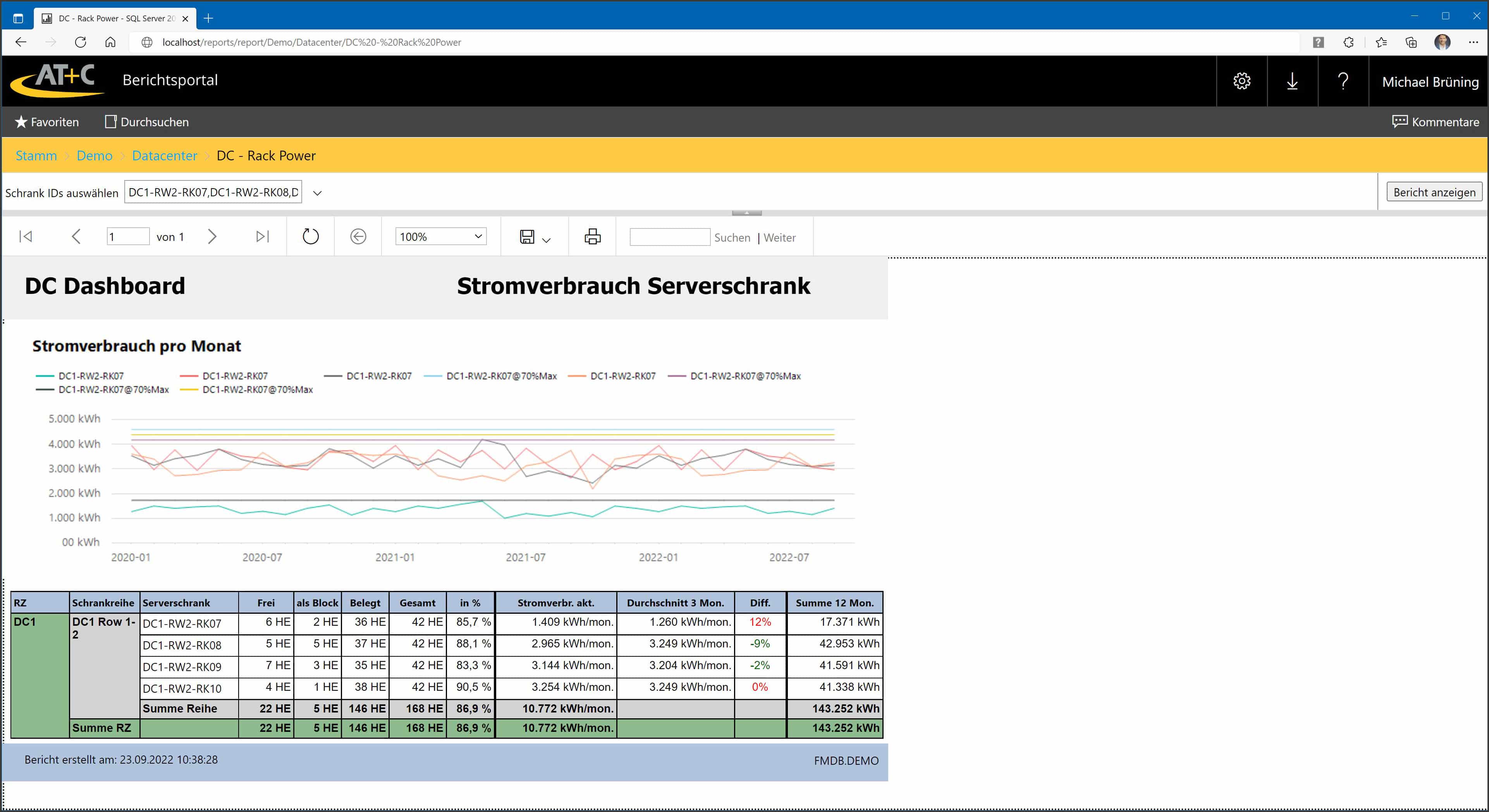
WMI Interface
The AT+C WMI interface helps to minimize the documentation effort of Windows-based devices and network components.
The necessary Windows management technology WMI (Windows Management Instrumentation) is part of the standard functionality and provides extensive information about the respective components via remote connection. Queried system information can be freely configured and assigned to the respective device attributes. In addition to queries of individual systems, IP address ranges or multiple selections of objects from AT+C VM.7 are also possible.
LDAP Interface
The LDAP interface allows data from an LDAP-compatible directory service such as Microsoft Active Directory, Novell eDirectory, or OpenLDAP to be read and synchronized with VM.7.
The data to be imported can be flexibly defined. Dependencies can also be evaluated by the interface, so that, for example, end devices automatically receive the location of their owner.
LDAP v3 is used for communication; if required, communication with the LDAP server is SSL encrypted.
WMI Interface
The AT+C WMI interface helps to minimize the documentation effort of Windows-based devices and network components.
The necessary Windows management technology WMI (Windows Management Instrumentation) is part of the standard functionality and provides extensive information about the respective components via remote connection. Queried system information can be freely configured and assigned to the respective device attributes. In addition to queries of individual systems, IP address ranges or multiple selections of objects from AT+C VM.7 are also possible.
LDAP Interface
The LDAP interface allows data from an LDAP-compatible directory service such as Microsoft Active Directory, Novell eDirectory, or OpenLDAP to be read and synchronized with VM.7.
The data to be imported can be flexibly defined. Dependencies can also be evaluated by the interface, so that, for example, end devices automatically receive the location of their owner.
LDAP v3 is used for communication; if required, communication with the LDAP server is SSL encrypted.
TANLock Interface
TANlock® is an individually configurable access control system that can also be easily integrated into existing systems.
By selecting between different interchangeable authentication modules, it can be adapted to many usage scenarios. Via the integration interface, status information can be retrieved, locks opened, and user data managed.
REG-IS
REG-IS® is an online information system with legal and technical expertise on the relevant regulations in Germany. The rule information system provided and constantly updated by Rödl & Partner lists over 2,000 sets of rules and offers the evaluation of the content contained therein. Long legal and standard texts are displayed simply and in a structured manner. In this way, the user can quickly and easily find the information important to them.
VM.7 offers integration with REG-IS based on the web interface, in which the Facility ID stored for the VM.7 objects, systems, and devices is used for targeted access.
Further information about REG-IS is available directly from Rödl & Partner.
TANLock Interface
TANlock® is an individually configurable access control system that can also be easily integrated into existing systems.
By selecting between different interchangeable authentication modules, it can be adapted to many usage scenarios. Via the integration interface, status information can be retrieved, locks opened, and user data managed.
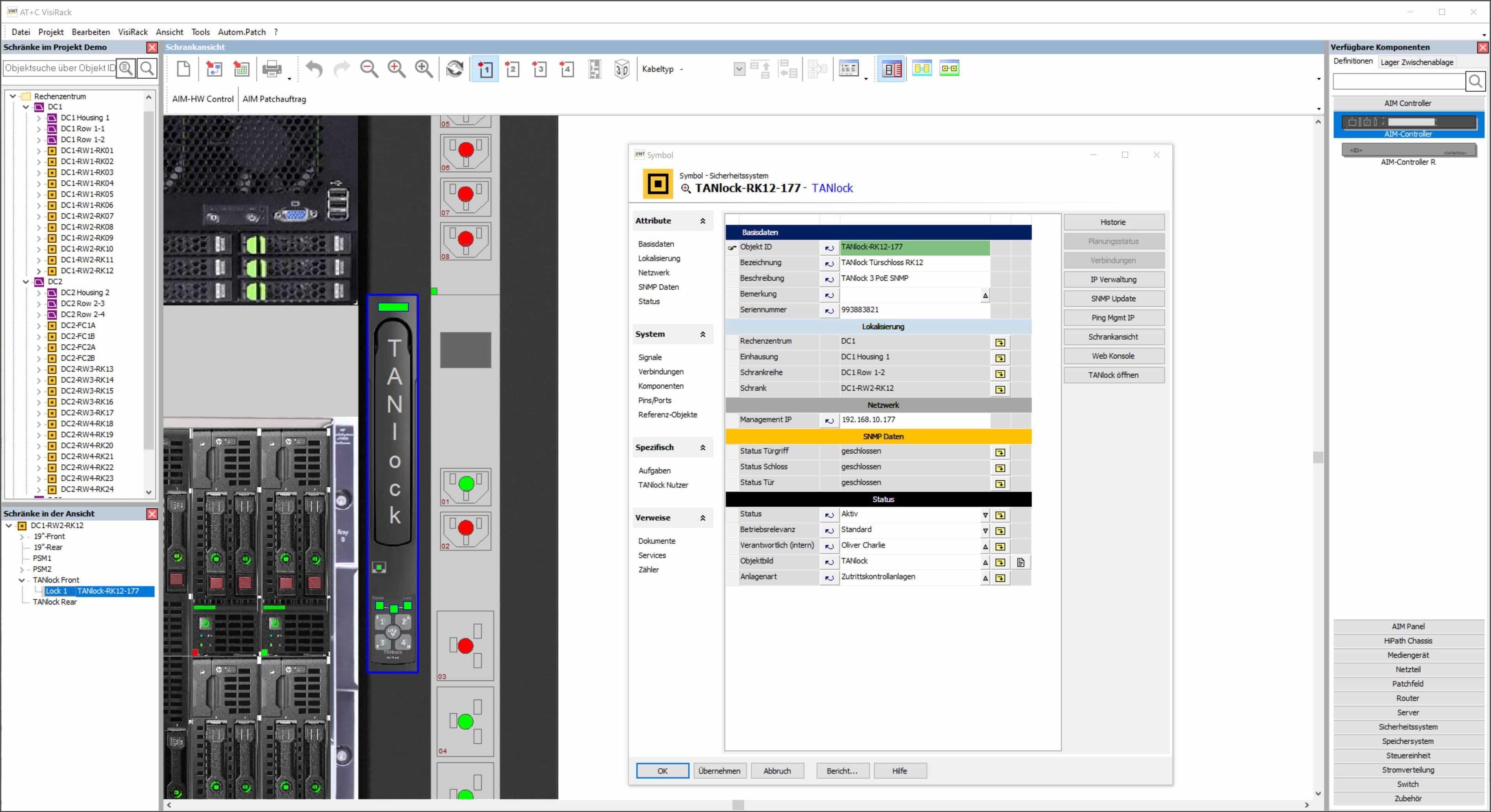
REG-IS
REG-IS® is an online information system with legal and technical expertise on the relevant regulations in Germany. The rule information system provided and constantly updated by Rödl & Partner lists over 2,000 sets of rules and offers the evaluation of the content contained therein. Long legal and standard texts are displayed simply and in a structured manner. In this way, the user can quickly and easily find the information important to them.
VM.7 offers integration with REG-IS based on the web interface, in which the Facility ID stored for the VM.7 objects, systems, and devices is used for targeted access.
Further information about REG-IS is available directly from Rödl & Partner.
System Integration with Third-Party Applications (e.g., SAP)
Integration with other enterprise applications can be done in a variety of ways. VM.7 offers the following main options for this:
So far, all customer integration requirements have been met with these solutions.
Third-Party Applications (e.g., SAP)
Integration with other enterprise applications can be done in a variety of ways. VM.7 offers the following main options for this:
So far, all customer integration requirements have been met with these solutions.
Evaluations and Reports
A particular strength of VM.7 is graphical evaluations on floor plans. For this purpose, both areas and symbols can be provided with color markings, the color of which is determined by the values of attributes or data fields.
Since all objects can be extended by any attributes and these attributes can also contain calculated values or data from other sources, this evaluation function is very universal and very popular with users due to its high informative value.
Standard Reports and Report Wizard
VM.7 offers a wide range of standard reports for typical evaluations for facility and connection management. An integrated report generator makes it easy for you to create new reports yourself and customize them as required.
Standard functions such as grouping, filters and common calculations (sum, min, max and average) are of course available, for complex expressions an expression editor supports the work. Formatting options are also integrated as well as predefined components (date, page number, etc.) and allow even complex reports including the display of database graphics (symbols, room contour, etc.).
Excel Ad-Hoc Reporting
All table views in the VM.7 application can be freely configured by each user in the displayed columns and used filter criteria. Such list configurations can be saved and exported to Excel at any time. This allows each user to individually create their own evaluations in Excel very quickly and easily.
Evaluations and Reports
A particular strength of VM.7 is graphical evaluations on floor plans. For this purpose, both areas and symbols can be provided with color markings, the color of which is determined by the values of attributes or data fields.
Since all objects can be extended by any attributes and these attributes can also contain calculated values or data from other sources, this evaluation function is very universal and very popular with users due to its high informative value.
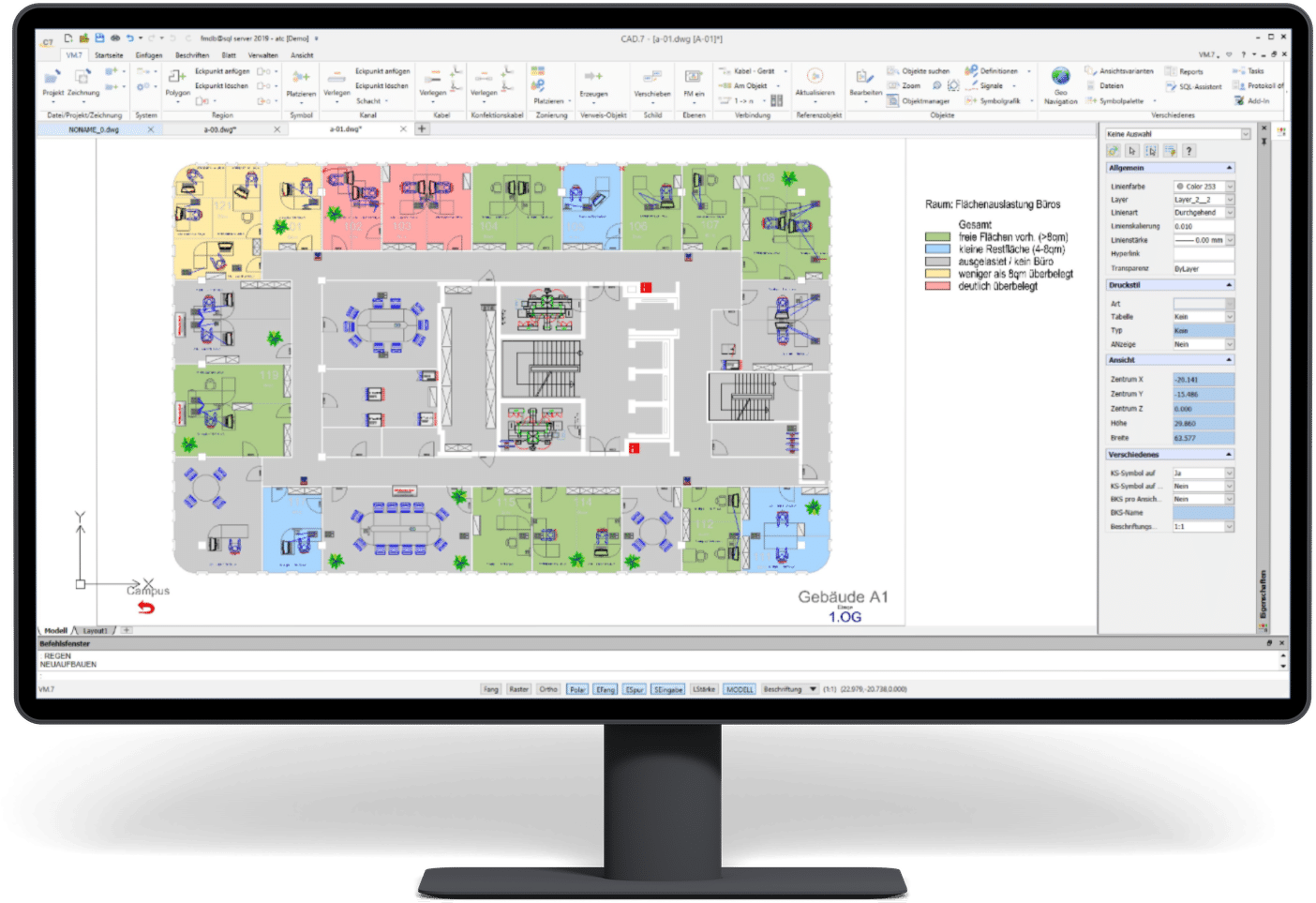
Standard Reports and Report Wizard
VM.7 offers a wide range of standard reports for typical evaluations for facility and connection management. An integrated report generator makes it easy for you to create new reports yourself and customize them as required.
Standard functions such as grouping, filters and common calculations (sum, min, max and average) are of course available, for complex expressions an expression editor supports the work. Formatting options are also integrated as well as predefined components (date, page number, etc.) and allow even complex reports including the display of database graphics (symbols, room contour, etc.).
Excel Ad-Hoc Reporting
All table views in the VM.7 application can be freely configured by each user in the displayed columns and used filter criteria. Such list configurations can be saved and exported to Excel at any time. This allows each user to individually create their own evaluations in Excel very quickly and easily.
SSRS and External Reporting Tools
Thanks to a documented database structure, all SQL-based reporting and analysis tools can be used with VM.7. One of the possible evaluation solutions, for which there are also numerous standard reports, are the Reporting Services of the Microsoft SQL Server database (SSRS). This powerful reporting platform is not only provided free of charge by Microsoft, but it is also fully integrated into the authorization concept of Windows. This means that it is possible to provide each user only with the reports that he should or may see. In addition, the information which user is logged in to the portal can be used to control data filters, such as automatic department filters.
In the Standard and Enterprise Edition of the Microsoft Database, in addition to the pure calling of reports, functions for subscribing and automated sending of reports are included as well as the possibility to use mobile dashboards (Power BI).
Symbol graphics from VM.7, for example for inventory or move lists, can also be used in SSRS reports.
SSRS and External Reporting Tools
Thanks to a documented database structure, all SQL-based reporting and analysis tools can be used with VM.7. One of the possible evaluation solutions, for which there are also numerous standard reports, are the Reporting Services of the Microsoft SQL Server database (SSRS). This powerful reporting platform is not only provided free of charge by Microsoft, but it is also fully integrated into the authorization concept of Windows. This means that it is possible to provide each user only with the reports that he should or may see. In addition, the information which user is logged in to the portal can be used to control data filters, such as automatic department filters.
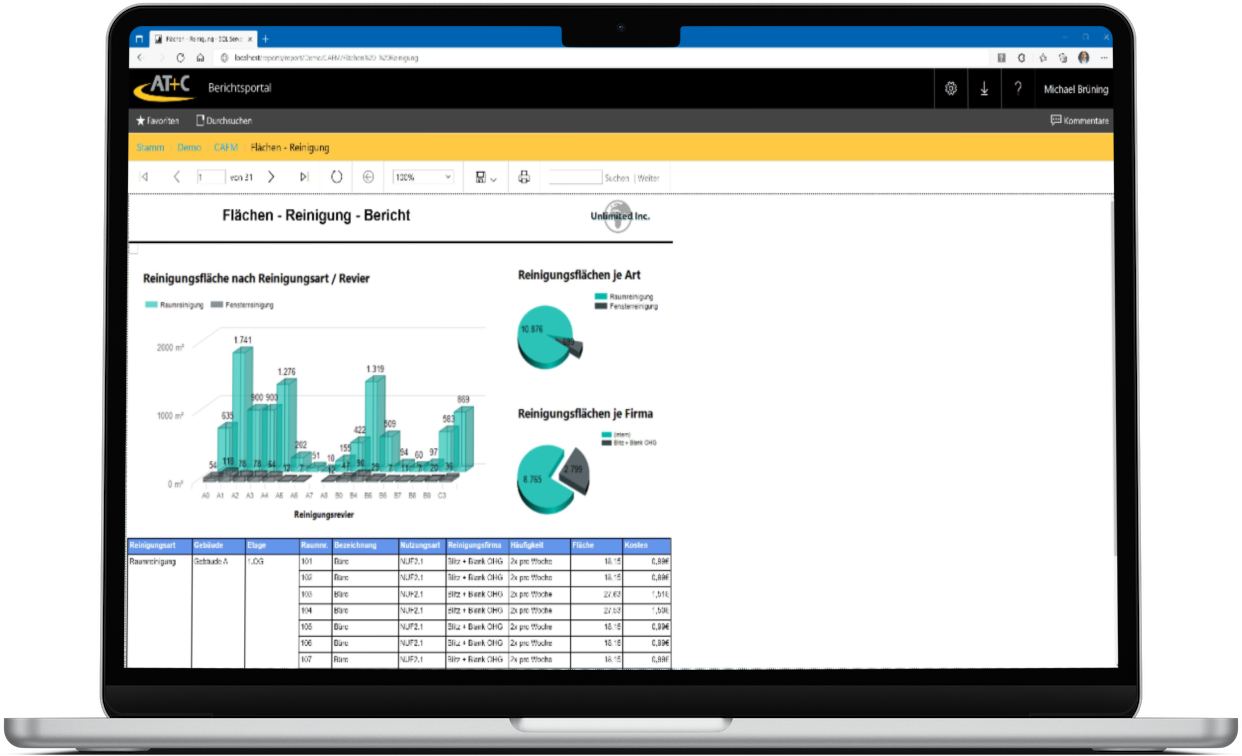
In the Standard and Enterprise Edition of the Microsoft Database, in addition to the pure calling of reports, functions for subscribing and automated sending of reports are included as well as the possibility to use mobile dashboards (Power BI).
Symbol graphics from VM.7, for example for inventory or move lists, can also be used in SSRS reports.
VM.7 Administration
Database Editor
The structure editor is the tool for the administrator of the VM.7 application.
With it, new classes, structures, tables and data fields can be created and indexes as well as data connections (joins) can be managed.
The adaptation of the input dialogs is also fully possible with it.
Tenants, Rights, Roles
With VM.7, roles and rights can be managed at a fine-granular level. With the help of groups and multiple group memberships, the administration effort is minimized and the clarity is increased. For example, rights can be structured in groups for module rights, individual function rights, certain object classes, tenants and visibilities for certain data fields. Users can then be assigned thematically to the respective groups, so that the total rights can be recognized very quickly from the combination of the assignments.
VM.7 Administration
Database Editor
The structure editor is the tool for the administrator of the VM.7 application.
With it, new classes, structures, tables and data fields can be created and indexes as well as data connections (joins) can be managed.
The adaptation of the input dialogs is also fully possible with it.
Tenants, Rights, Roles
With VM.7, roles and rights can be managed at a fine-granular level. With the help of groups and multiple group memberships, the administration effort is minimized and the clarity is increased. For example, rights can be structured in groups for module rights, individual function rights, certain object classes, tenants and visibilities for certain data fields. Users can then be assigned thematically to the respective groups, so that the total rights can be recognized very quickly from the combination of the assignments.
CAD.7
If you are looking for a powerful and inexpensive alternative to AutoCAD®, then CAD.7 hits the bull's eye. It works 100% natively with the DWG format, no conversion is required.
For AutoCAD® users, the getting-used-to time is minimal. The operating philosophy is very similar, you can find your way around immediately. Many customers believe that CAD.7 goes one step further in user-friendliness, as the user interface is more structured and uncluttered than comparable solutions.
Key features of CAD.7 are:
Integration with VM.7
CAD.7 has been specially optimized for interaction with VM.7. A customizable, intelligent toolbar enables quick access to the VM.7 functions you use most often. Even users without CAD experience find it very easy to get started with CAD editing and allows intuitive work with floor plans.
CAD.7
If you are looking for a powerful and inexpensive alternative to AutoCAD®, then CAD.7 hits the bull's eye. It works 100% natively with the DWG format, no conversion is required.
For AutoCAD® users, the getting-used-to time is minimal. The operating philosophy is very similar, you can find your way around immediately. Many customers believe that CAD.7 goes one step further in user-friendliness, as the user interface is more structured and uncluttered than comparable solutions.
Key features of CAD.7 are:
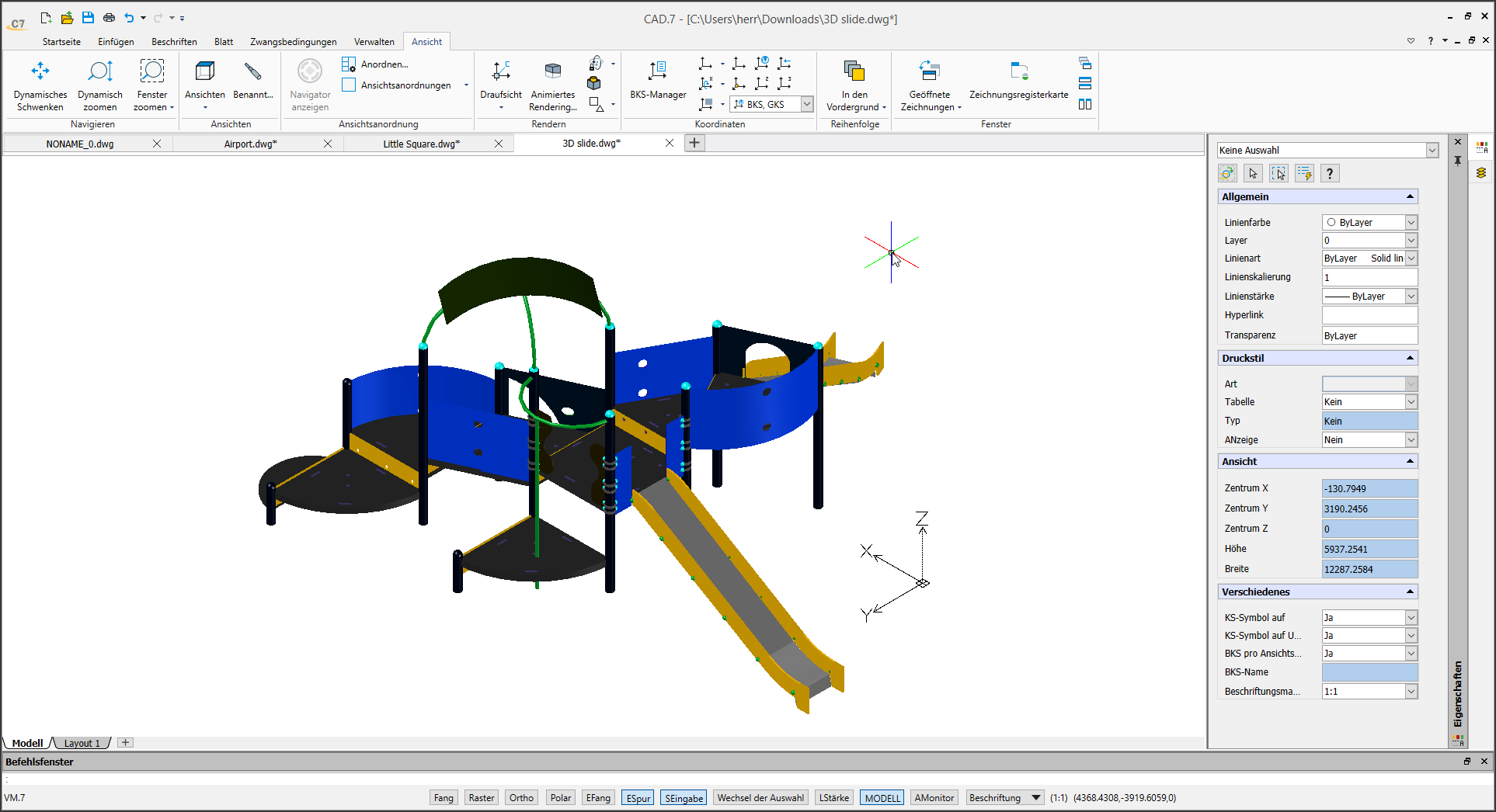
Integration with VM.7
CAD.7 has been specially optimized for interaction with VM.7. A customizable, intelligent toolbar enables quick access to the VM.7 functions you use most often. Even users without CAD experience find it very easy to get started with CAD editing and allows intuitive work with floor plans.
AirportFM
The AT+C AirportFM solution is an industry-specific CAFM system specifically for major airports, airports and airfields.
The special solution for airports is based on the VM.7 Facility Manager and has been extended by aviation-specific aspects. These include in particular special areas, such as security areas, different technical areas, aprons, taxiways and runways, but also special equipment, such as metal detectors, access gates, lighting systems or navigation equipment.
Special features:
AirportFM
The AT+C AirportFM solution is an industry-specific CAFM system specifically for major airports, airports and airfields.
The special solution for airports is based on the VM.7 Facility Manager and has been extended by aviation-specific aspects. These include in particular special areas, such as security areas, different technical areas, aprons, taxiways and runways, but also special equipment, such as metal detectors, access gates, lighting systems or navigation equipment.
Special features:
CAFM for Traffic Signal Systems (LSA)
Traffic management using traffic signal systems (LSA) is a complex undertaking. These systems must operate reliably to efficiently manage traffic flow at intersections. Furthermore, their operation requires consideration from a business perspective, managing costs and resources effectively.
The CAFM for LSA software is an extension of the AT+C VM.7 Facility Manager, tailored to the specific needs of road traffic authorities and similar organizations responsible for planning, operating, and maintaining traffic signal infrastructure.
Key Features:
CAFM for Traffic Signal Systems
Traffic management using traffic signal systems (LSA) is a complex undertaking. These systems must operate reliably to efficiently manage traffic flow at intersections. Furthermore, their operation requires consideration from a business perspective, managing costs and resources effectively.
The CAFM for LSA software is an extension of the AT+C VM.7 Facility Manager, tailored to the specific needs of road traffic authorities and similar organizations responsible for planning, operating, and maintaining traffic signal infrastructure.
Key Features:
